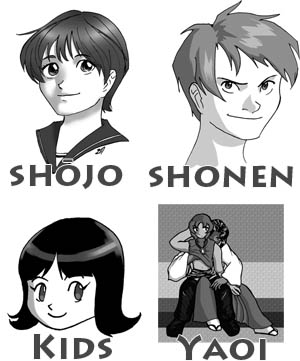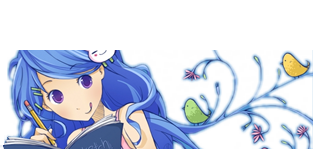Anime 101 for Parents :: Parent's Guide to Anime P2
Like the other columns in this series, this is written towards the confused parent who’s just trying to make sense of it all. So today, we have some basic descriptions of what anime is and what we mean when we say there is a lot of variety to it.
An Intro to Anime
As a concerned parent, you might have heard things like “All Japanese cartoons are porn” or “What do pre/teens see in cartoons?” and you’re likely wondering, well, what do they see in it, and what exactly is anime?
Have no fear, all shall be revealed in time.
In 1995 and 1996 respectively, Sailor Moon and Dragon Ball Z came to American TV, beginning the integration of anime into mainstream media. Sure, anime had been in America before that, but it was only available on imported VHS tapes and was rarely shown on television. There had also been Speed Racer and Transformers, but these shows were portrayed very clearly as children’s shows and many people did not even realize that these were Japanese in origin. The limited availability made anime mostly the domain of “geeks,” as it was available at comic book shops and was popularized through viewing rooms at science-fiction conventions. These shows began to bring anime to the attention of the general public, but it wasn’t until Pokémon hit the airwaves that things really took off for anime in America.
Now many kids enjoy shows like Naruto, One Piece, Yu-Gi-Oh, InuYasha and ZachBell on WB (now CW) and Cartoon Network. Not to mention all the anime-inspired shows like Powerpuff Girls, Teen Titans, Atomic Betty, Samurai Jack, and Batman Beyond. In addition, Cartoon Network runs its Adult Swim at midnight (Eastern Time) and that officially goes until two AM. Even starting at about eleven, Cartoon Network is no longer showing shows intended towards those under thirteen.
Main types of anime aimed at children/teens:
Shōjo (or Shoujo) – Literally means girl or little girl, and it is both a genre in America and a demographic. Generally, a shōjo manga will deal with a female protagonist, and the story will center around characters, emotion, romance, and drama. It can cover all the genres, from historical to sci-fi to high school. The art style tends to be more elegant and detailed, often marked by extra detail in the eyes and flowery backgrounds.
Shōjo manga tends to focus more on emotions and characters than it does on plot and action. Magical girls are typically a subcategory of shōjo, and while there is a plot going on, the focus is mostly on the challenges the magical girl faces as she comes to terms with her new powers and the difficulties inherent in trying to balance crime fighting, school, and relationships.
Many guys do enjoy shōjo books, and the American companies are making an effort to shift the focus away from the female aspect of the definition and instead look at the character focus.
Viz also produces a monthly magazine called Shōjo Beat, featuring all shōjo titles.
Shōjo Examples: Sailor Moon, Marmalade Boy, Fushigi Yuugi, Ceres, Aishiteruze Baby, Nana.
Shōnen (or Shounen) – Literally meaning a “few years,” or transliterally “boy,” this demographic is aimed at the action-loving boy or the girl-loving teenager. Humor is almost always a part of the story, with zany accidents befalling the central male character. Unrealistic and unattainable girls used to be a common element, but recently more realistic girls have made their way into the mix. Another common theme to shōnen shows is the idea of improving oneself in order to win the big fight, get the girl, or get into the right college.
Harem shows are especially popular in this genre, as a shy guy suddenly finds himself living with three or more hot girls, with at least one who likes to make advances towards him.
Many of the shows that are on Cartoon Network and CW are shōnen style, and more likely to appeal to both the male and female demographic. Even with anime becoming more and more popular with young women, shows that are male-based still gain more popularity, because women will openly watch boy-oriented shows, while guys are more hesitant to admit to loving a show designed for girls. Of course, shows like InuYasha, Naruto, and Pokémon all still contain female characters that are realistically portrayed, which helps to make the shows popular with both genders.
Shōnen art styles tend to be less detailed than shōjo, and the characters are often rougher looking and more likely to have scars and old injuries.
Shōnen Examples: Tenchi Muyo, Dragon Ball Z, Detective Conan, Death Note, Bleach, Yu Yu Hakusho, Fullmetal Alchemist, Trigun, Love Hina, InuYasha, Naruto, One Piece.

First three images by Stefanie B, last by Uncreativity
Children’s Shows – Not exactly a genre of its own, but more a way to distinguish between the age demographics that shōjo and shōnen shows target. These are the shows that appear as Saturday morning cartoons. The art style and humor is often more cartoony, and the storyline is more like a sitcom, with each story wrapping up by the end of the episode, though a loose overall plot ties things together season after season.
When these shows are brought to America, they are typically toned down (or dumbed down, as some adult fans would argue) from the Japanese versions, even if the target demographic is the same. In Japan, things like cross-dressing, brief nudity, sexual based jokes, religion based references (like in Dragon Ball Z, a character was named Mr. Satan), and homosexuality are not so readily banned from children.
Children’s Examples: Pokémon, Card Captor Sakura, Yu-Gi-Oh, Naruto, One Piece.
Yaoi and Shōnen-Ai – Both are terms for gay guys, though Shōnen-Ai focuses more on boy-love (BL) and is often more of an innocent romance. Yaoi tends to be more pornographic or sexual in nature, though the two terms are rather intermixed in America, and the best thing to do is to look at the book’s rating.
Popular with teenage girls because many of them don’t want to think of other girls with the guys they find hot, this is a drastically growing genre. Yaoi Press prints only yaoi manga, some by American writers and artists, and other manga companies have their own yaoi lines.
Now while the guys in yaoi and shōnen-ai might be gay, they very rarely represent realistic homosexual relationships. Instead, they personify the idea of how “cute” gay guys are, and one of the guys is often extremely feminine.
Examples: Fake, Gravitation.




